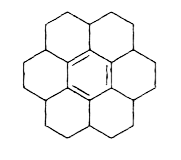Assertion (A) The α-hydrogen atom in carbonyl compounds is less acidic.
Reason (R) The anion formed after the loss of α-hydrogen atom is resonance stabilised.
The correct Answer is:d
To analyze the assertion and reason provided in the question, we will break down the concepts of acidity in carbonyl compounds and the stability of the anion formed after the loss of alpha-hydrogen.
1. Understanding the Assertion (A):
- The assertion states that the alpha-hydrogen atom in carbonyl compounds is less acidic.
- In carbonyl compounds (like aldehydes and ketones), the alpha-hydrogen is attached to the carbon adjacent to the carbonyl group (C=O).
2. Understanding the Reason (R):
- The reason states that the anion formed after the loss of the alpha-hydrogen atom is resonance stabilized.
- When an alpha-hydrogen is removed (deprotonation), it forms an enolate ion, which is resonance-stabilized.
3. Analyzing the Acidity of Alpha-Hydrogens:
- The acidity of a hydrogen atom is determined by the stability of the resulting anion after deprotonation.
- In carbonyl compounds, when the alpha-hydrogen is removed, the resulting enolate ion can be represented by multiple resonance structures.
4. Resonance Stabilization:
- The enolate ion can be depicted as having a negative charge on the oxygen atom and can also have a double bond between the carbon and the carbonyl carbon.
- This delocalization of the negative charge across different atoms (through resonance) increases the stability of the anion.
5. Conclusion:
- Since the anion formed after the loss of alpha-hydrogen is resonance stabilized, the alpha-hydrogens in carbonyl compounds are actually more acidic than what the assertion claims.
- Therefore, the assertion (A) is false while the reason (R) is true.
Final Answer:
- Assertion (A) is false, and Reason (R) is true.
- The assertion states that the alpha-hydrogen atom in carbonyl compounds is less acidic.
- In carbonyl compounds (like aldehydes and ketones), the alpha-hydrogen is attached to the carbon adjacent to the carbonyl group (C=O).
- The reason states that the anion formed after the loss of the alpha-hydrogen atom is resonance stabilized.
- When an alpha-hydrogen is removed (deprotonation), it forms an enolate ion, which is resonance-stabilized.
- The acidity of a hydrogen atom is determined by the stability of the resulting anion after deprotonation.
- In carbonyl compounds, when the alpha-hydrogen is removed, the resulting enolate ion can be represented by multiple resonance structures.
- The enolate ion can be depicted as having a negative charge on the oxygen atom and can also have a double bond between the carbon and the carbonyl carbon.
- This delocalization of the negative charge across different atoms (through resonance) increases the stability of the anion.
- Since the anion formed after the loss of alpha-hydrogen is resonance stabilized, the alpha-hydrogens in carbonyl compounds are actually more acidic than what the assertion claims.
- Therefore, the assertion (A) is false while the reason (R) is true.
- Assertion (A) is false, and Reason (R) is true.
Topper's Solved these Questions
Similar Questions
Knowledge Check
- Question 1 - Select One
Assertion: The α-hydrogen atom is carbonyl compounds is less acidic.
Reason: The anion formed after the loss of α-hydrogen atom is resonance stabilised.AAssertion and reason both are correct and reason is correct explanation of assertion.BAssertion and reason both are wrong statement.CAssertion is correct statement but reason is wrong statement.DAssertion is wrong statement but reason is correct statement. - Question 2 - Select One
Assertion : α-hydrogen atoms in aldehydes or ketones are acidic.
Reason : Anions formed aftrt the loss of α-hydrogen atoms are stablished due to inductive effect.AIf both assertion and reason are correct and reason is correct explanation for assertion.BIf both assertion and reason are correct and reason is not correct explanation for assertion.CIf assertion is correct but reason is incorrect.DIf assertion as well as reason are both incorrect. - Question 3 - Select One
Total number of α hydrogen in given compound is :
 A4B5C6D7
A4B5C6D7
Total number of α - hydrogen in the following compound is
 View Solution
View Solution(A) α-hydrogen atom of carbonly compouns is acidic in nature.
(R) beta-hydrogen is directly attached to carbon to next to carbonyl carbonView SolutionAssertion : β- hydrogen atom of carbonyl compounds is acidic in nature.
Reason : β- hydrogen is directly attached to carbon next to carbonyl carbon.View SolutionThe ______ hydrogen atoms of carbonyl compounds (i.e aldehydes and ketones) are acidic protons.
View SolutionAldehydes having no α - hydrogen atom undergo
View Solution


